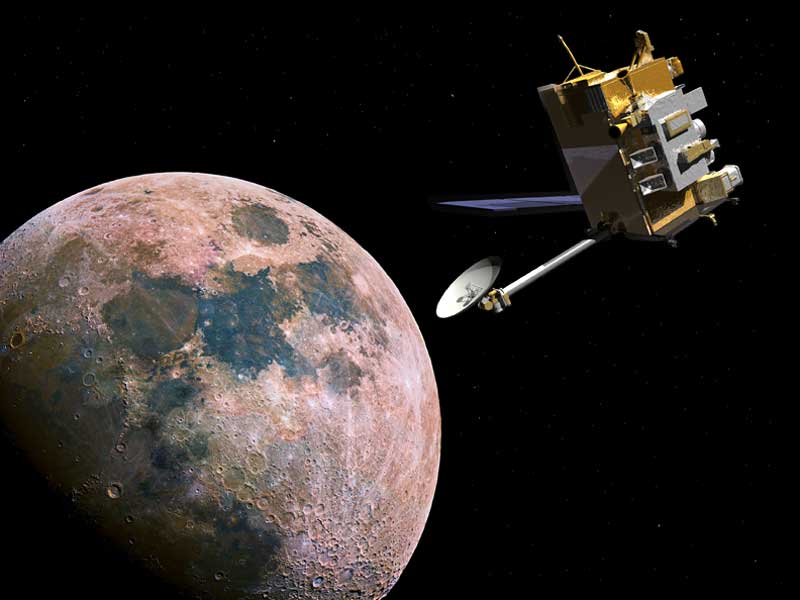
WASHINGTON (PTI): A NASA spacecraft has provided strong evidence that the Moon's volcanic activity slowed gradually instead of stopping abruptly a billion years ago, a finding that has major implications for how warm the Moon's interior is thought to be.
Scores of distinctive rock deposits observed by Lunar Reconnaissance Orbiter (LRO) are estimated to be less than 100 million years old.
This time period corresponds to Earth's Cretaceous period, the heyday of dinosaurs. Some areas may be less than 50 million years old, researchers said.
"This finding is the kind of science that is literally going to make geologists rewrite the textbooks about the Moon," said John Keller, LRO project scientist at NASA's Goddard Space Flight Centre in Greenbelt, Maryland.
The deposits are scattered across the Moon's dark volcanic plains and are characterised by a mixture of smooth, rounded, shallow mounds next to patches of rough, blocky terrain.
The features are too small to be seen from Earth, averaging less than 500 metres across in their largest dimension. One of the largest, a well-studied area called Ina, was imaged from lunar orbit by Apollo 15 astronauts.
Ina appeared to be a one-of-a-kind feature until researchers from Arizona State University in Tempe and Westfalische Wilhelms-Universitat Munster in Germany spotted many similar regions in high-resolution images taken by the two Narrow Angle Cameras that are part of the Lunar Reconnaissance Orbiter Camera, or LROC.
The team identified a total of 70 irregular mare patches on the near side of the Moon.
The large number of these features and their wide distribution strongly suggest that late-stage volcanic activity was not an anomaly but an important part of the Moon's geologic history.
The numbers and sizes of the craters within these areas indicate the deposits are relatively recent. Based on a technique that links such crater measurements to the ages of Apollo and Luna samples, three of the irregular mare patches are thought to be less than 100 million years old, and perhaps less than 50 million years old in the case of Ina.
The steep slopes leading down from the smooth rock layers to the rough terrain are consistent with the young age estimates, researchers said.
In contrast, the volcanic plains surrounding these distinctive regions are attributed to volcanic activity that started about 3 and a half billion years ago and ended roughly 1 billion years ago. At that point, all volcanic activity on the Moon was thought to cease.
Several earlier studies suggested that Ina was quite young and might have formed due to localised volcanic activity. However, in the absence of other similar features, Ina was not considered an indication of widespread volcanism.
The findings have major implications for how warm the Moon's interior is thought to be, researchers said.
The study was published in the Nature Geoscience.
 Previous Article
Previous Article












The Indian Air Force, in its flight trials evaluation report submitted before the Defence Ministry l..
view articleAn insight into the Medium Multi-Role Combat Aircraft competition...
view articleSky enthusiasts can now spot the International Space Station (ISS) commanded by Indian-American astr..
view article